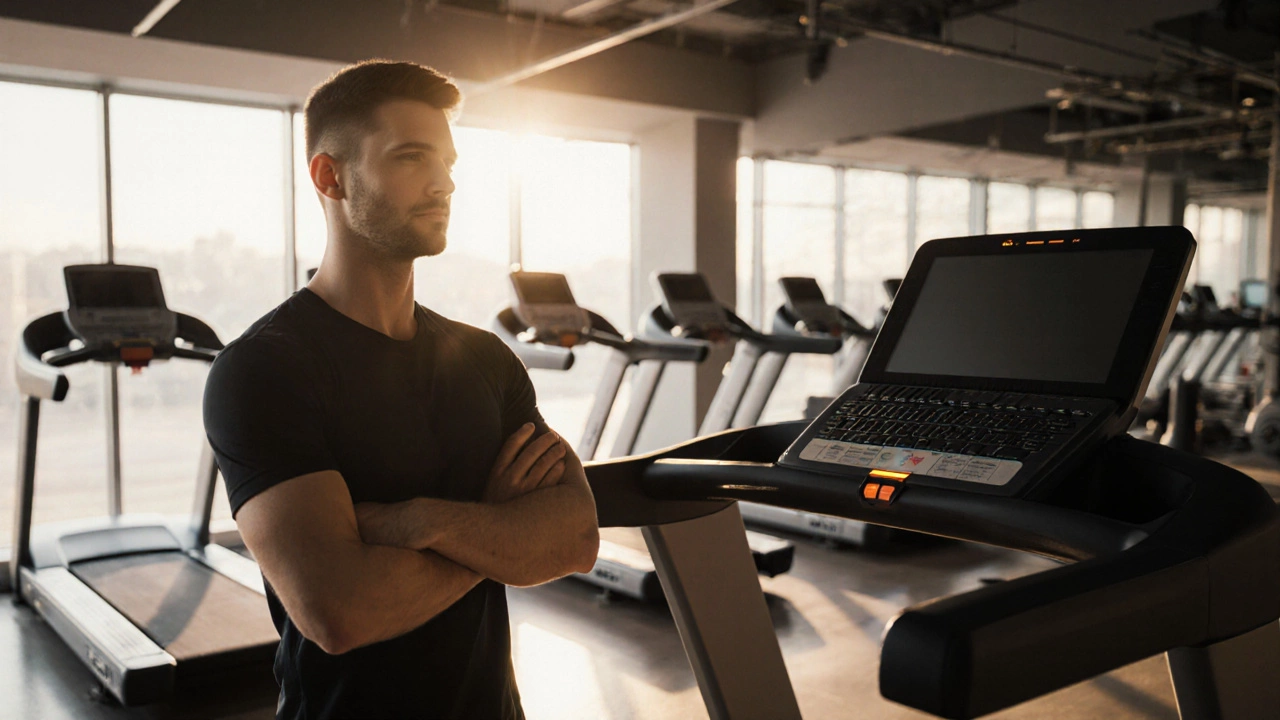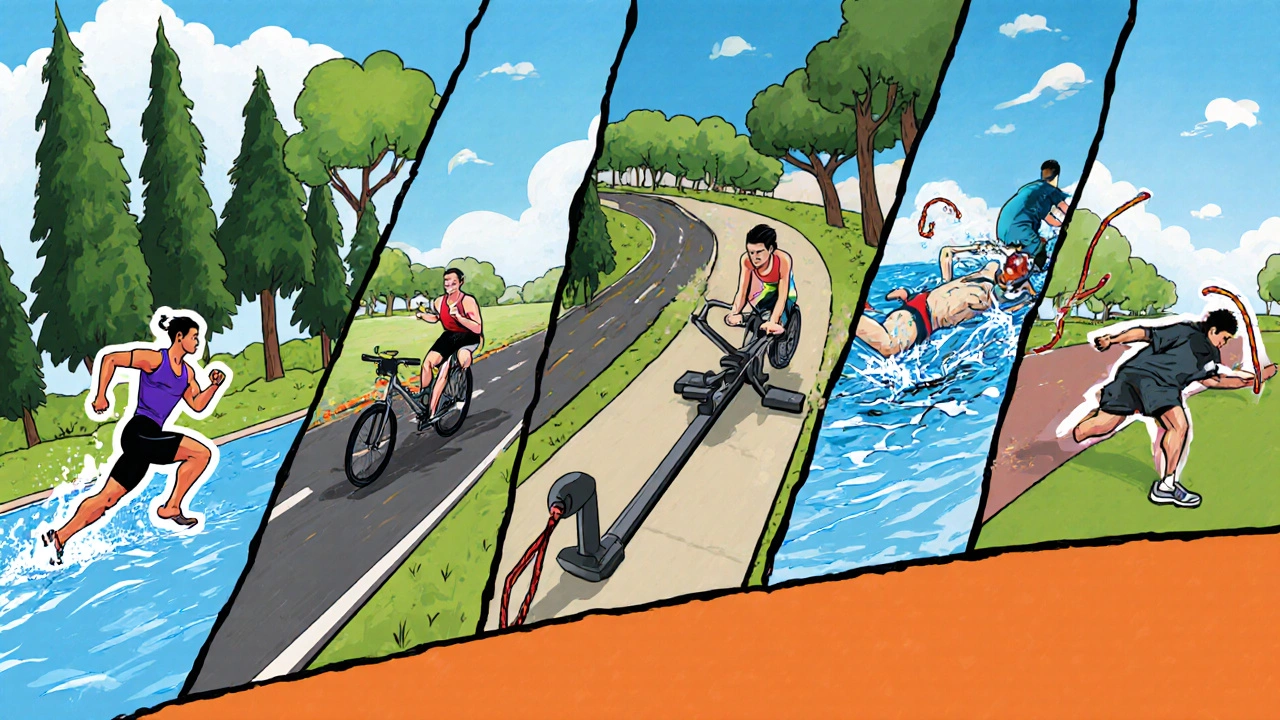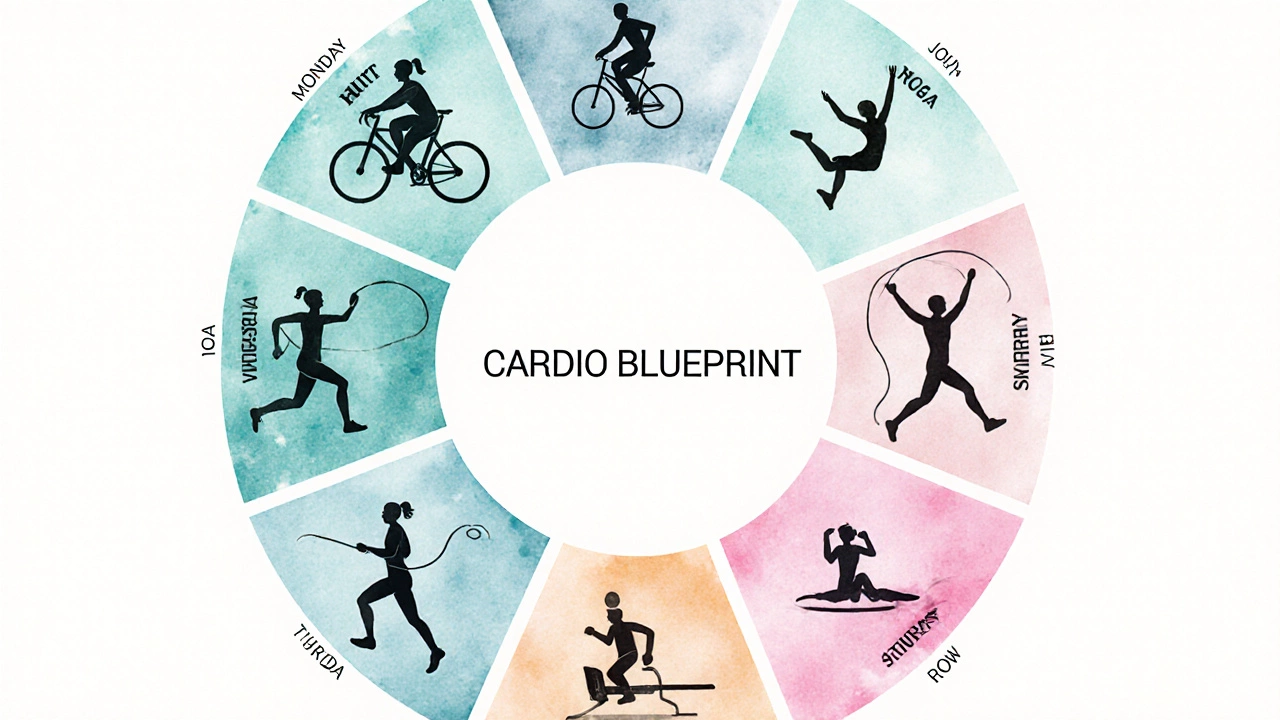
Cardio Calorie Calculator
Calculate Your Burn
How It Works
Based on MET values (Metabolic Equivalent of Task) from the article:
- HIIT 12-15 kcal/min
- Running 11-13 kcal/min
- Jump Rope 13-15 kcal/min
- Cycling 9-11 kcal/min
- Swimming 9-12 kcal/min
Results will appear here after calculation
Ever stood in front of the treadmill wondering if you’re wasting time? You’re not alone. Picking the right cardio moves can feel like guessing which superhero movie will actually be good. The good news? Science, data, and a few practical tricks can point you to the best cardio workout for your goals.
Understanding What Makes Cardio “Effective”
Effectiveness isn’t a one‑size‑fits‑all label. It blends three core factors:
- Calorie burn per minute - raw energy you expend.
- After‑burn effect (EPOC) - how many calories you keep burning after the session ends.
- Fit‑for‑purpose - does the activity match your fitness level, joint health, and time constraints?
When all three line up, you’ve got a cardio option that truly moves the needle.
Defining the Main Players
First, let’s name the big hitters you’ll likely see in gyms, parks, or streaming apps.
Cardio exercise is any activity that raises heart rate and breathing to improve cardiovascular fitness. It ranges from low‑impact walks to bone‑shaking sprints.
High‑Intensity Interval Training (HIIT) is a protocol that alternates short bursts of maximal effort with brief recovery periods. Think 30 seconds of sprint, 30 seconds of walk, repeated for 10‑20 minutes.
Steady‑state cardio is continuous activity performed at a moderate intensity, like a 45‑minute jog. The pace stays relatively constant.
Running is a weight‑bearing cardio option that can be tweaked for speed, distance, or terrain. It’s the go‑to for many endurance athletes.
Cycling is a low‑impact pedal‑based workout that can be done outdoors or on a stationary bike. It spares the knees while still torching calories.
Rowing is a full‑body, machine‑based cardio that mimics the pull‑and‑push motion of watercraft. It hits legs, core, and back simultaneously.
Jump rope is a portable, high‑intensity activity that can be performed in short intervals for massive calorie burn. It’s a favorite among boxers and CrossFit fans.
Swimming is a total‑body, low‑impact cardio performed in water, ideal for joint‑sensitive individuals. The resistance of water ramps up energy expenditure.
How the Body Burns Calories: The Science in Plain English
Every cardio movement translates into a number called MET (Metabolic Equivalent of Task). One MET equals the energy you use while sitting quietly. Running at 6mph sits around 10 METs, while moderate cycling is about 6 METs. The higher the MET, the more calories you burn per minute.
But METs don’t tell the whole story. Two workouts with the same MET value can differ in "after‑burn"-the extra calories you continue to burn as your body restores oxygen levels, clears lactate, and repairs muscles. HIIT, because of its high‑intensity spikes, typically generates a larger EPOC effect than steady‑state cardio.
Finally, efficiency matters. Skilled swimmers or cyclists often become so economical that they burn fewer calories at a given speed compared to a beginner. That’s why beginners often see a bigger calorie deficit from the same activity.
Side‑by‑Side Comparison: Which Cardio Wins the Calorie‑Burn Race?
| Cardio Type | Avg. Calorie Burn (per min) | Typical Session Length | Equipment Needed | Joint Impact | After‑Burn (EPOC) Rating |
|---|---|---|---|---|---|
| HIIT | ≈12‑15 kcal | 10‑20min | Bodyweight or minimal gear | Variable (high if plyometric) | High |
| Steady‑state cardio | ≈8‑10 kcal | 30‑60min | None (outdoor) or treadmill | Low‑moderate | Moderate |
| Running | ≈11‑13 kcal | 20‑45min | Running shoes | High (impact) | Moderate‑High |
| Cycling | ≈9‑11 kcal | 30‑60min | Bike (stationary or road) | Low | Moderate |
| Rowing | ≈10‑12 kcal | 20‑40min | Rowing machine | Low‑moderate | Moderate |
| Jump rope | ≈13‑15 kcal | 5‑15min | Rope | Low‑moderate | High |
| Swimming | ≈9‑12 kcal | 30‑45min | Pool access | Very low | Moderate |

Choosing the Right Cardio for Your Lifestyle
Numbers are helpful, but they don’t dictate what you should do. Here’s a quick decision guide:
- Limited time? HIIT or jump rope give max burn in the shortest span.
- Joint pain or injuries? Swimming, cycling, or rowing spare the knees while still torching calories.
- Prefer the outdoors? Running and cycling let you soak up fresh air, but bring appropriate shoes and a helmet.
- Need mental unwind? Steady‑state cardio, especially walking or easy jogging, often acts as moving meditation.
- Goal is endurance for a race? Blend steady‑state runs with occasional HIIT intervals to build both aerobic and anaerobic capacity.
Mixing two or three methods over a week usually yields the best overall fitness and keeps boredom at bay.
How to Track Your Progress Without Obsessing
Use a heart‑rate monitor or a fitness tracker that shows calories burned, but treat the numbers as a guide, not a gospel.
- Record average heart rate for each session; aim for 70‑85% of your max HR for most cardio work.
- Log perceived exertion on a 1‑10 scale. A 7‑8 usually aligns with the intensity needed for substantial calorie burn.
- Take weekly photos or body measurements; the scale can be misleading if you’re gaining muscle while losing fat.
When you see a plateau, try swapping a steady‑state run for a 15‑minute HIIT circuit or increase the incline on the treadmill.
Common Pitfalls and How to Avoid Them
Over‑training. Doing high‑intensity sessions daily can crush recovery, making performance drop. Keep at least one low‑impact day.
Ignoring form. Bad posture while rowing or jumping rope wastes energy and raises injury risk. Spend 5minutes on technique before the main set.
Sticking to one mode. Your body adapts quickly. Rotate activities every few weeks to keep the metabolic engine revving.

Sample Weekly Cardio Blueprint (Beginner to Intermediate)
- Monday - 20min HIIT (30sec sprint, 30sec walk) on a treadmill.
- Tuesday - 30min easy cycling, focus on keeping heart rate in zone 2.
- Wednesday - Rest or gentle yoga for active recovery.
- Thursday - 15min jump‑rope intervals (45sec on, 15sec off).
- Friday - 30min steady‑state run at a conversational pace.
- Saturday - 25min rowing, alternating 2min hard, 2min easy.
- Sunday - Light swim or brisk walk, 30‑45min, just enjoy the movement.
This mix hits high intensity, low impact, and steady endurance, giving you both calorie burn and cardiovascular health.
Bottom Line: What Cardio Is Most Effective?
If you define "effective" as the highest calorie burn per minute **and** a strong after‑burn, HIIT and jump rope sit at the top. If you need low joint stress, swimming and cycling win. For those who love the rhythm of a long run, steady‑state still delivers solid results, especially when combined with occasional high‑intensity bursts.
The smartest approach is to pick the activity that fits your schedule, keeps you moving consistently, and feels good enough to repeat. Consistency beats intensity any day.
Frequently Asked Questions
Does HIIT burn more fat than steady‑state cardio?
Research shows HIIT triggers a higher EPOC response, meaning you keep burning calories for hours after the workout. Combined with a modest calorie deficit, it can lead to faster fat loss than equal‑time steady‑state cardio.
Can I do HIIT if I have knee problems?
Traditional sprint‑based HIIT can stress the knees. Switch to low‑impact intervals like cycling, rowing, or high‑knee march‑in‑place. The intensity stays high while the joint load stays low.
How often should I change my cardio routine?
Every 4‑6 weeks, tweak at least one variable: duration, intensity, or modality. This prevents plateaus and keeps your metabolism guessing.
Is it better to fast before a cardio session?
Fast‑ed cardio may increase fat oxidation, but it can also reduce performance and increase perceived effort. For most people, a small snack (like a banana) before a moderate session works best.
Do I need a heart‑rate monitor to get accurate results?
A monitor helps you stay in target zones, but you can also gauge intensity by how fast you can talk. If you’re gasping, you’re likely in the high‑intensity range.
